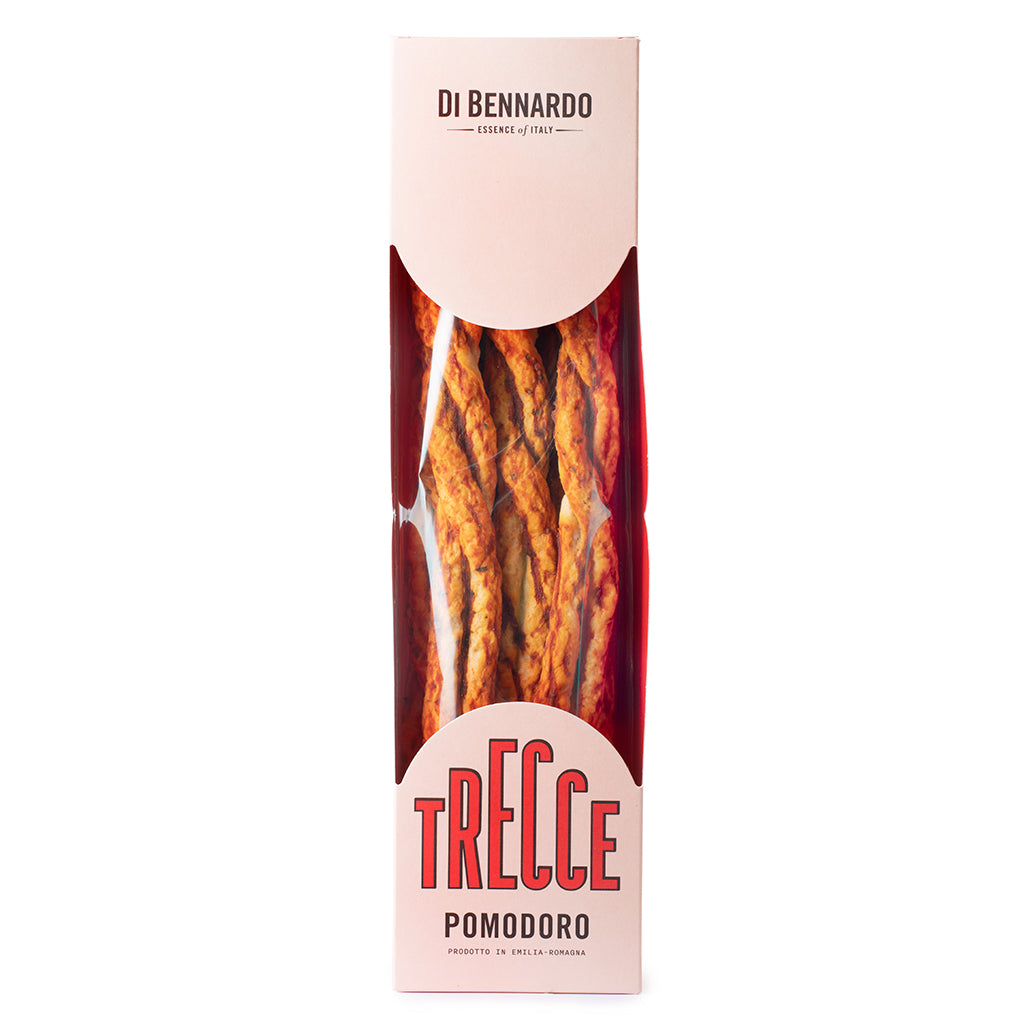Your shopping cart is empty
Truffle hunting is one of the most fascinating aspects of the mushroom world. The cultivation of truffles is very difficult and does not yield the expected results. For this reason, foraging in different truffle areas is still the best way to harvest the precious underground mushroom. Finding truffles is not easy, there are very strict regulations to protect this culinary gift of the earth as well. But before we go into the truffle hunt and all its challenges, let's first clarify more essential matters.
What are truffles?

Truffles can be described as a mushroom that grows underground and is difficult to obtain or find. Truffles belong to the tubular mushroom family.
In fact, it is an underground mushroom that grows near the roots of trees and can be very difficult to harvest as it lies between 5 and 30 cm underground. For this reason, truffles are usually harvested in the wild by trained pigs (truffle pigs), but especially nowadays by dogs (truffle dogs).
In the forest, truffles form a symbiotic relationship with the roots of several tree species - especially beech, poplar, oak, birch, hornbeam, hazel and pine. These noble tubers prefer clay or calcareous soils that are well drained and neutral or alkaline. Depending on the type of truffle, they bear fruit all year round and, unlike above-ground mushrooms, do not form stalks and caps. This means that the spore-containing part of the truffle is completely enclosed.
The origin of the word truffle seems to be the Latin term "tuber", meaning swelling or lump, which later became "tufer" and from which the various European terms originated, such as the Italian word "tartufo".
In Italy, the prized black and white winter truffles can be found in Abruzzo, Piedmont, Umbria, Emilia Romagna, Tuscany, Lazio and Molise. But can you just go out and look for real truffles? Or what do budding collectors need to find truffles?
What do you need to find truffles?
THE TRUFFLE LICENCE
To obtain a permit to gather truffles in Italy or Piedmont, you must register with the UTR (regional authority) in your province of residence. The card or licence for truffle hunting is valid for five years from the date of issue. You can only receive it if you are over 14 years old and have passed the relevant test for truffle hunting. A fee must be paid each year.
The place and date of the exams can be requested at any time from the UTR, including information on training courses. The courses are organised by the park authorities and municipalities. The course teaches how to recognise and search for truffles in compliance with the legal regulations. The aptitude test should not be underestimated. If it is not passed, it can only be repeated 12 months later.
WHAT TOOLS DO I NEED TO HUNT FOR TRUFFLES?
Italian law prescribes a truffle collector some special tools to dig out the precious mushroom. These tools include the spade (truffle collector’s spade) and a small hoe to damage the soil and the delicate roots of the mushroom as little as possible. Once the truffles have been pulled out of the ground, the hole must also be filled with soil to allow new truffles to grow.
The transport of the truffles also requires special tools: either the typical truffle bag made specifically for truffles or a vest similar to those used by mushroom pickers. It is recommended to wear knee-high boots and appropriate clothing to protect yourself from thorns, stinging insects and snakes. A truffle collector should always carry gloves for safe digging, a stick and first-aid ointments.
WHICH DOGS ARE SUITABLE FOR TRUFFLE HUNTING?
Pigs were originally used for truffle hunting. Pigs have a very good sense of smell and can easily locate the underground mushrooms. But pigs have one disadvantage: They are greedy and immediately eat the truffles they find. Nevertheless, they played an important role in the truffle hunt for their efficiency and sense of smell.
On the noble farms, the pigs were first replaced by dogs: The faithful and tame friend of man is considered much more elegant and refined in his truffle hunt. The use of the dog spread quickly and the truffle pig was used less and less.
Today, the law prohibits the use of pigs in Italy because the animal causes great damage to the forest ecosystem during its excavations. The use of dogs is mandatory, as they are the only animal that can find the exact location of the truffle without damaging the ground.
In Italy, the law stipulates that the dog must be specially trained for truffle hunting.
A trained truffle tracking dog is therefore indispensable and training is not cheap, a well-trained dog can quickly cost up to 5000 euros. However, it is not mandatory to buy an already trained dog or to contact a professional dog handler. With great care and patience it is possible to train a dog yourself. If the dog is a puppy, you start with simple games that gradually become more complex exercises.
Every dog with a good nose is suitable for the truffle hunt, but characteristics such as intelligence, concentration, stamina and dedication are also very important. A dog needs all of this to master its training and prove itself to be a good truffle-sniffing dog.
However, tradition considers some breeds to be the best when it comes to finding truffles:
Bracco Italiano, English Pointer, Spinone Italiano, Cocker Spaniel, Jack Russel, Griffon and Lagotto Romagnolo.


TRUFFLE HUNTING CHALLENGES: HOW AND WHERE TO FIND TRUFFLES?
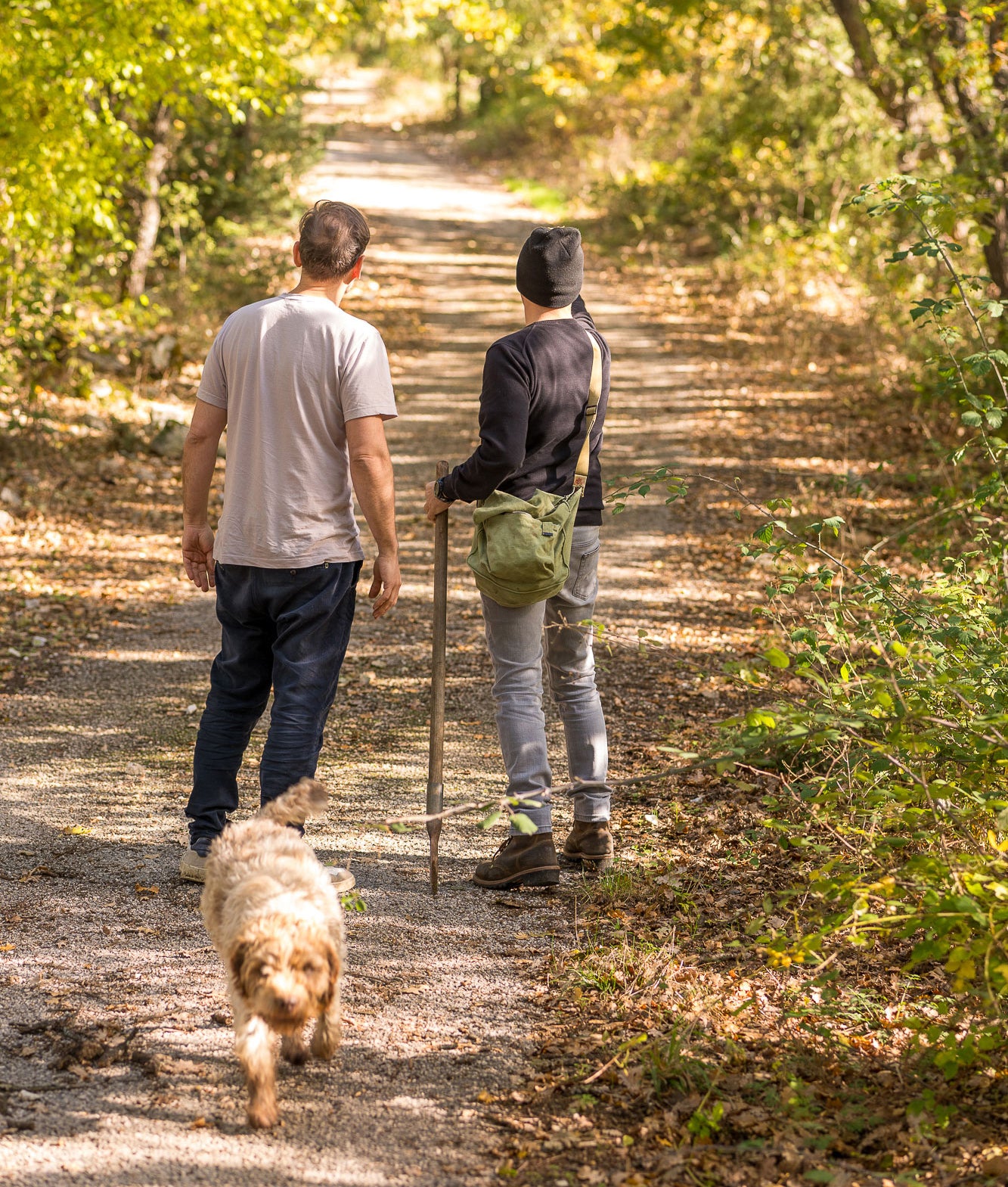
Surrounded by the magnificent snow-capped mountains of the Alps, the famous truffle town of Alba is hilly and slightly mountainous. The best way to get here is by car. Alba and Barolo are one of the richest areas for white truffles, not to mention the hills of Asti (Palio di Asti) and Langhe.
In most cases, however, simply knowing which plants are symbiotic with the truffle mushroom or in which areas they occur is not enough to achieve real success when collecting truffles in Piedmont.
It is necessary to know the land and the forest intimately and truffle collectors must be able to avoid the dangers it poses. Dangers include ticks, thorns and prickly plants, vipers, garbage and dangerous objects as well as spiders and insects.
During the truffle season from September to December, hunters with trained dogs roam the countryside and sparse forests of Piedmont (Asti, Alba, Barolo, Barbaresco, La Morra, Neive), Abruzzo and Tuscany in search of the precious white Alba truffles.
Truffles need moist soil and tree roots to grow, as well as the proximity of rivers or streams. Truffles are not found in forests that are too dark with too little light. In order to grow, the truffles need to exchange resources with the plants and these need sunlight for the process of photosynthesis. In return, they give the truffles nutrients.
It is difficult to find soil with roots that are suitable for their growth. Every season and every type of truffle influences the truffle hunt in different ways - the climate, the soil and all the factors involved in the formation of white or black truffles. In order for truffles to grow optimally, the soil must have these characteristics in addition to many other qualities:
An alkaline pH value
A calcareous soil
Good ventilation
Low vegetation surface
High humidity
The truffle dog is also an absolutely crucial factor in the search. Truffle hunting usually takes place early in the morning or at night, when the dog's sense of smell is at its highest. It is a very competitive business and it is also easier at these times to keep secret where you have found the truffles. In addition, it is an advantage to carry maps and a GPS device with you at all times to avoid losing your bearings early in the morning or in the evening.
WHAT TYPES OF TRUFFLES ARE THERE AND WHEN IS THE BEST TIME TO FIND TRUFFLES?
The three best-known truffle varieties in Italy include:
1. white Alba truffle (Tuber magnatum Pico)
Shape and color: They almost always have an irregular shape with a smooth, dirty beige surface that ages to a brown. The color of the white Alba truffle flesh is light, very brittle and varies from milky white to deep pink depending on the age of the tree with which it is in symbiosis.
Smell and taste: Musky and earthy with notes of garlic, honey, butter and forest floor. The truffle aroma is more intense, but the truffle flavor is more delicate than that of black truffles and it is more perishable. White Alba truffles should be eaten within a week of harvesting. They range from walnut to apple size and weigh up to 1 pound (0.45 kg).
They are eaten raw in small quantities, usually grated over pasta, risotto, eggs, salads or meat dishes. Just a few grams can add a unique flavor to any recipe. They grow in symbiosis with oak, hazelnut, poplar, willow and beech trees. They can reach a diameter of up to 12 cm and 500 g, but are usually much smaller.
Harvest: The white truffle season begins at the end of September, but they reach their peak in October and November. It is illegal to sell them before September to guarantee quality.
2. Black winter truffle (Tuber brumale Vitt.)
Shape and color: The bark is black with light, low and flattened warts. The gleba (cross-section) is gray or brownish with white veins.
Aroma and taste: The rind is black: they have a delicate and intense aroma of earth, forest and mushrooms, unlike other summer truffles or white winter truffles. Where the smell is more subtle, black winter truffles convince with much more intense aromas and a slight sweetness and nuttiness, without bitterness and their taste is full, round and pleasant. It can be said that white truffles are 80% aroma and 20% taste. With black truffles it is exactly the opposite, 20% aroma and 80% taste.
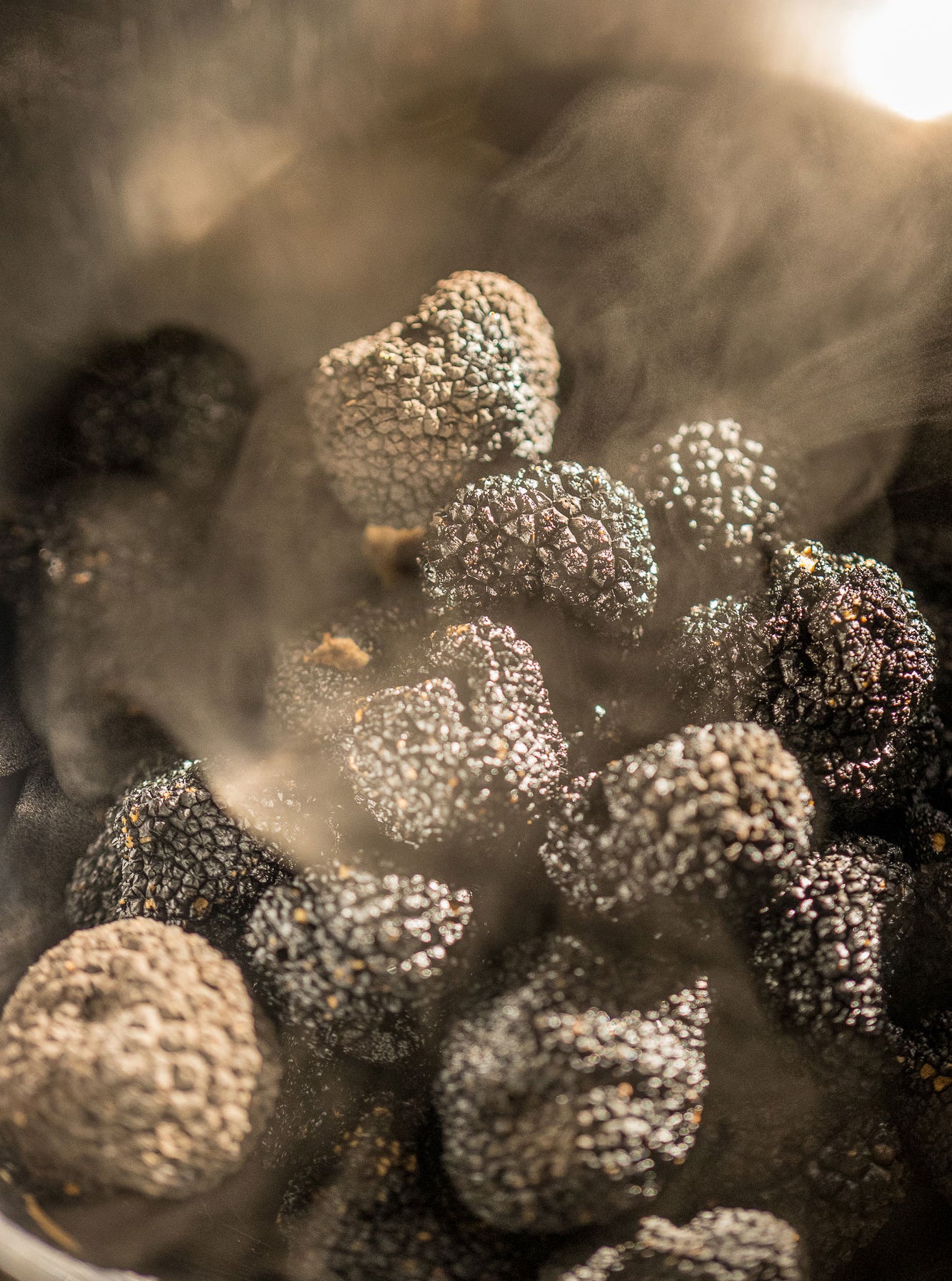
3. black summer truffle (Tuber Aestivum Vitt.)
Shape and color: They have a round, irregular shape with a brown or black outer skin and pyramid-shaped tubercles about 3 to 9 mm wide, reminiscent of rough bark. Their flesh can be light, hazelnut-like or brown.
Aroma and taste: The aroma is more delicate than that of black winter truffles and the taste is somewhat similar to that of porcini mushrooms. The flavor or intensity is about 20% of that of black winter truffles (Perigord truffles).
They grow symbiotically with oak, hornbeam, pine, ash, beech and hazel trees.
Harvest: Summer truffles are usually at their best in July, but can also be found from May to October.
What is the difference between white and black truffles?
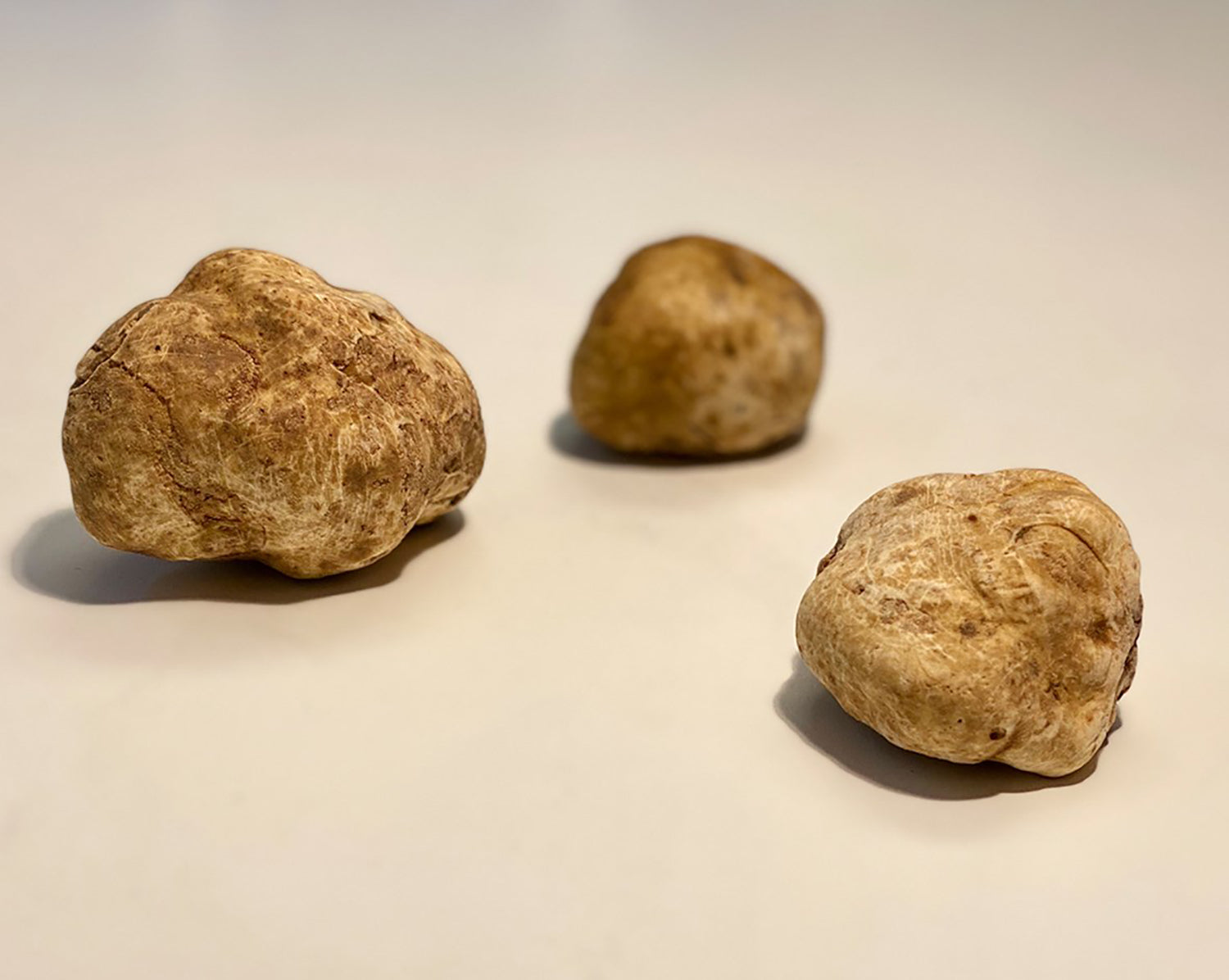
White truffle
People often ask themselves the question: White or black truffle?
White truffles are smooth with a slight yellow hue. They are the spicier of the two, with an intoxicating musk aroma and a garlic-like taste. Both the taste and smell of white truffles can easily overwhelm a dish. Therefore, they are usually sparingly shaved over pasta or used as a garnish. White truffles are served raw, as they lose taste and quality if they are too hot.
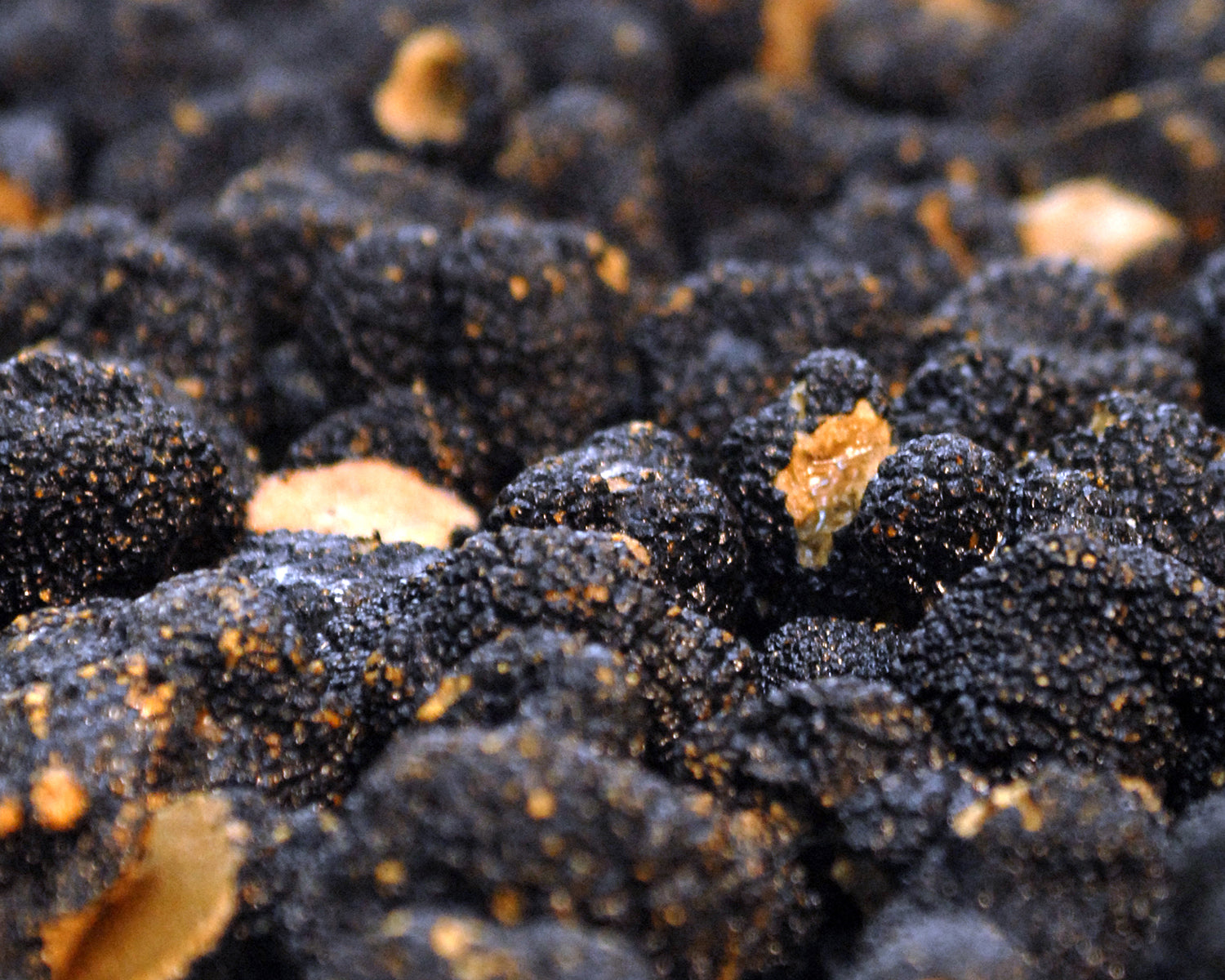
Black truffle
Black truffles have a rough, stiff appearance, similar to the bark of a tree. Its taste is more subtle than that of white truffles, accompanied by an earthy aroma. There are also some light nutty notes. Black truffles are easier to heat and typically go a little better in sauces.
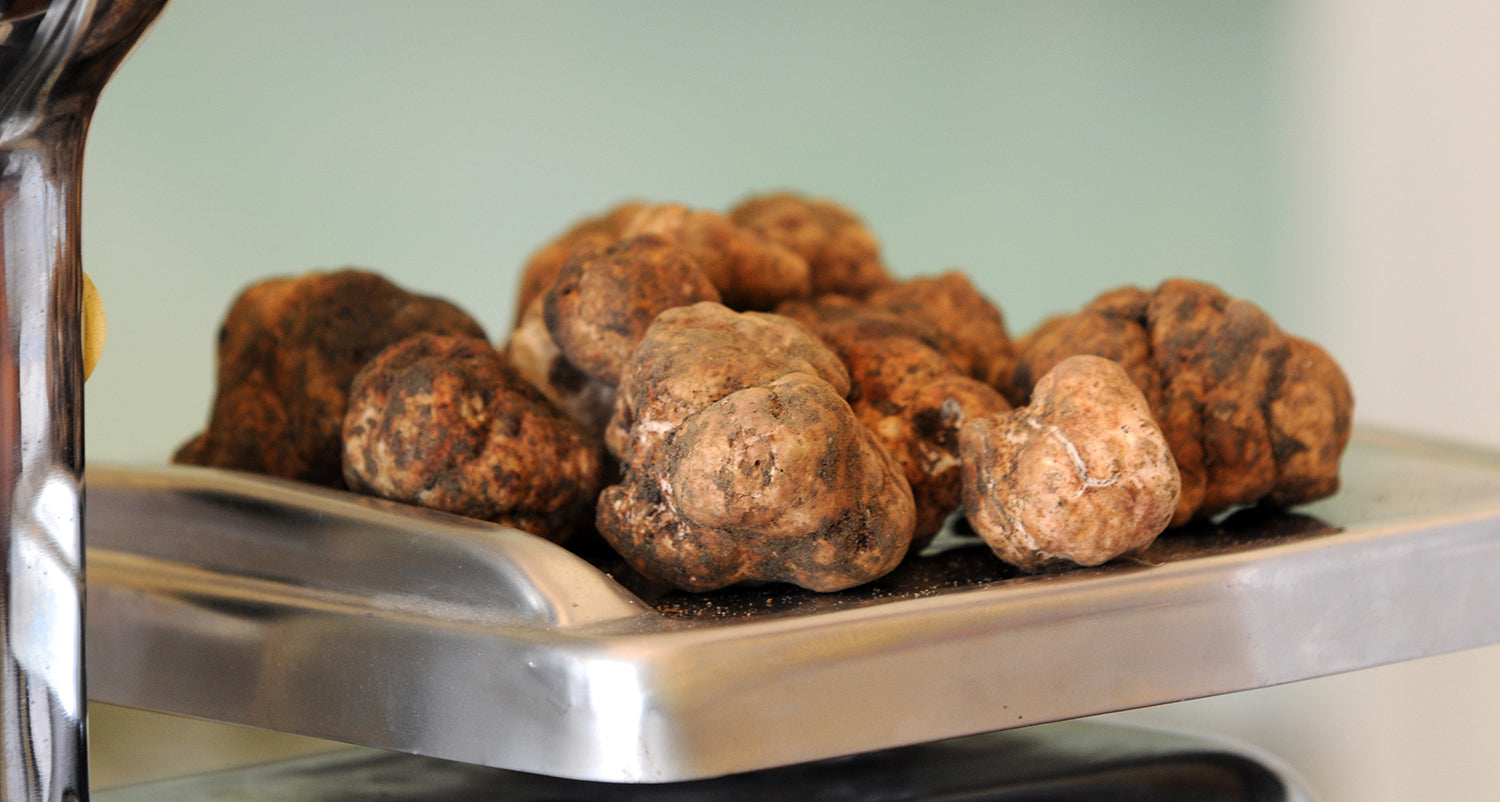
WHAT DOES TRUFFLE COST?
White truffle is the more expensive of the two types of truffle. Prices usually range between EUR 150 and EUR 200 per 25 g, but depending on the season, they can be much higher. White truffles are rarer and can only thrive in very specific environments, which pushes up the price. The price of black truffles goes up to 9000 EUR per kilogram.
Because black truffles are a bit more flexible and can grow in different areas (and can also be bred more), black truffles tend to be a bit cheaper – around 50 EUR per 25 g.
At Di Bennardo, you can buy the highest quality white Alba truffles from October to December from 170 CHF.
How do you store truffles?
Ideally, the truffles should be used as fresh as possible. However, if they cannot be used immediately, they may be stored for several days (6 to 8 days) in a paper bag or clean towel (never in plastic or aluminium foil) in the refrigerator. Truffles should be cleaned with a soft brush before use to remove dirt and other impurities. However, this should only happen after storage, as the soil makes the truffle more durable. For a better tasting experience, the paper bag or towel should be changed daily, as moisture may escape.
A truffle can also be dipped in olive oil. The oil absorbs the taste, but the shelf life at room temperature without pasteurisation is limited. Traditionally, many people store truffles in glass containers filled with dry white rice. However, this is highly controversial, as the rice grains tend to deprive the truffles of moisture and flavour.
Why is the white truffle from Alba so expensive?
Apart from all the reasons, which are entirely dependent on the environment and climate, truffle hunting naturally also affects the price. Truffle hunting in Abruzzo requires a dog to be trained. Training a truffle dog for the hunt requires time, attitude and patience. The dogs must be taught to recognize the smell and taste of the truffles so that they can find the precious mushrooms under many centimetres of soil during the truffle hunt..
When do you get white truffle?
The white Alba truffles are rare truffles and are only available in Piedmont for a few months a year. Climate change is also contributing to changes in the conditions for truffles in Piedmont, with yields decreasing in some cases.
How is the demand?
Another reason why Alba truffles are so expensive is, of course, the demand on the market. The increasing demand and the difficulty of finding them is driving up the price of the rarer variety of Alba white truffle. Every year the International Fair of White Truffles is held in Piedmont. where the application for the sale of the truffles found is submitted, the quality is assessed and the white Alba truffles are then released at an estimated price.
SUMMARY
To sum up, truffles are expensive for the following reasons:
- Rare occurrence of soil with wet and exposed soil
- Presence of certain trees such as hazel, oak, poplar, lime tree
- Training of animals for truffle hunting such as dogs or pigs
- Application for the global food market
- Unique flavour, rarity and perishability of the product
- High global demand in top gastronomy
What food and wine do white truffles go with?
When the white truffles pass through the counter, the chefs in the top-class restaurant like to grate the truffle over lightly buttered noodles, creamy risottos, white fish, meat (especially veal and beef tartar), mashed potatoes, hearty cream sauces and Italian baking specialities, as well as omelettes or delicious salads. Here, less is more, because the food is not intended to mask the taste of the truffle, but to fully tickle the potential of this culinary miracle tuber on the palate.

